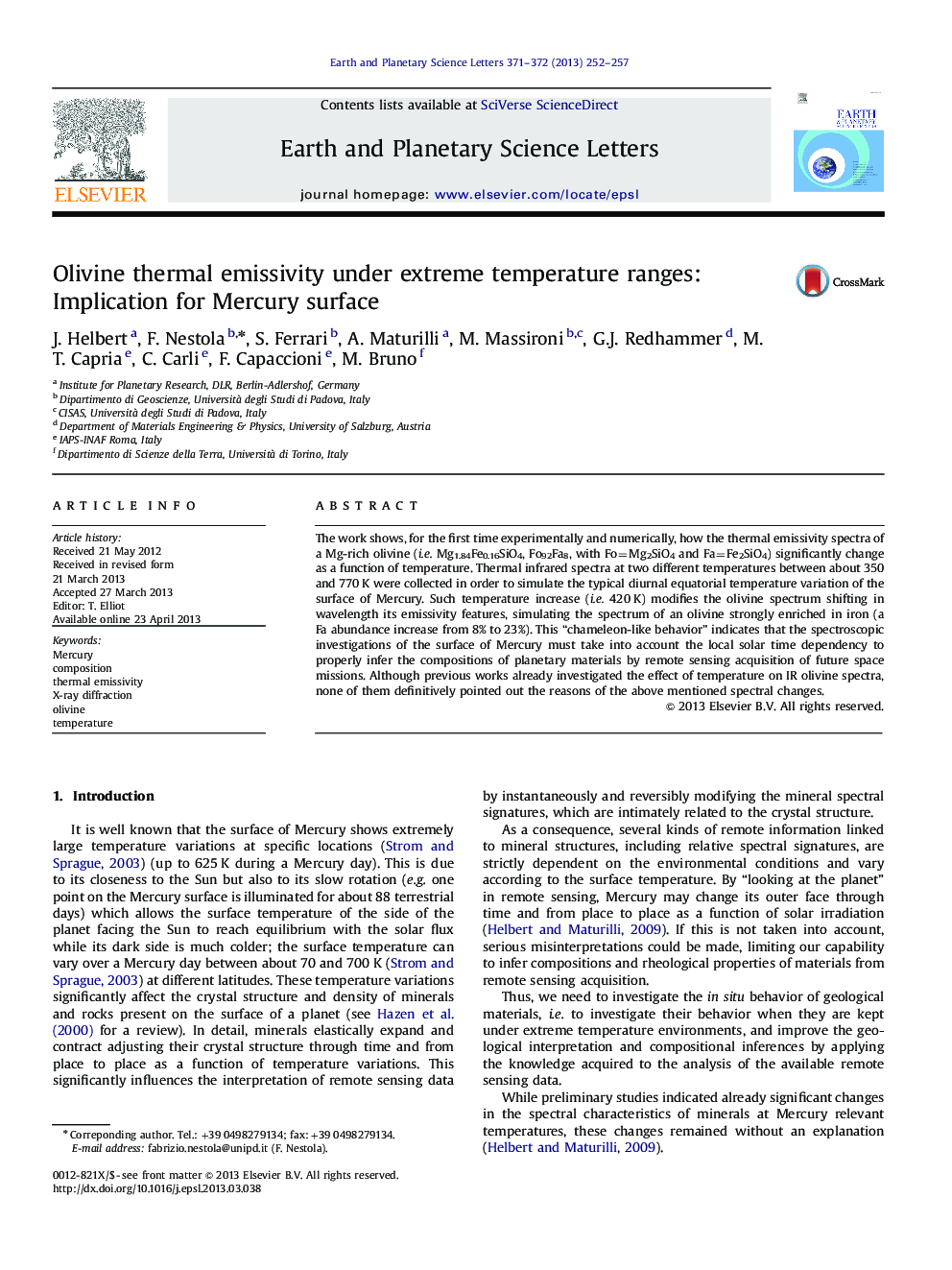| Article ID | Journal | Published Year | Pages | File Type |
|---|---|---|---|---|
| 4677229 | Earth and Planetary Science Letters | 2013 | 6 Pages |
•We investigated the spectral signature of olivine as a function of temperature.•The thermal expansion of olivine was measured with increasing temperature.•Spectral signature and volume are affected by temperature and/or iron content.
The work shows, for the first time experimentally and numerically, how the thermal emissivity spectra of a Mg-rich olivine (i.e. Mg1.84Fe0.16SiO4, Fo92Fa8, with Fo=Mg2SiO4 and Fa=Fe2SiO4) significantly change as a function of temperature. Thermal infrared spectra at two different temperatures between about 350 and 770 K were collected in order to simulate the typical diurnal equatorial temperature variation of the surface of Mercury. Such temperature increase (i.e. 420 K) modifies the olivine spectrum shifting in wavelength its emissivity features, simulating the spectrum of an olivine strongly enriched in iron (a Fa abundance increase from 8% to 23%). This “chameleon-like behavior” indicates that the spectroscopic investigations of the surface of Mercury must take into account the local solar time dependency to properly infer the compositions of planetary materials by remote sensing acquisition of future space missions. Although previous works already investigated the effect of temperature on IR olivine spectra, none of them definitively pointed out the reasons of the above mentioned spectral changes.
